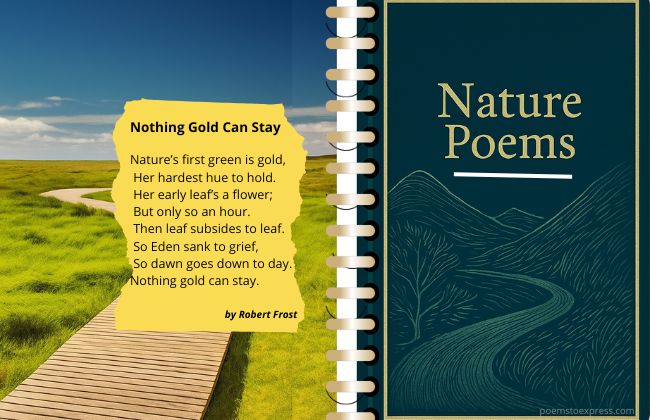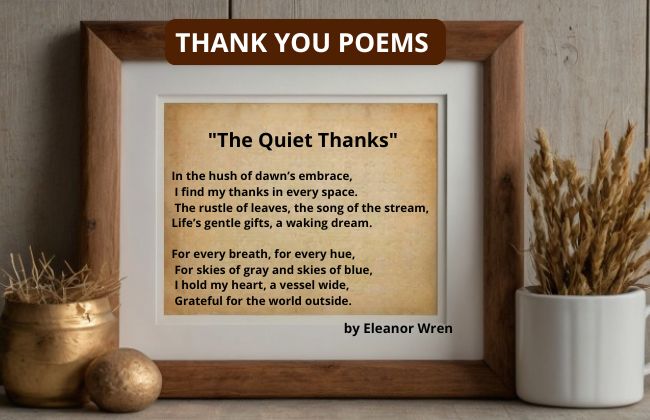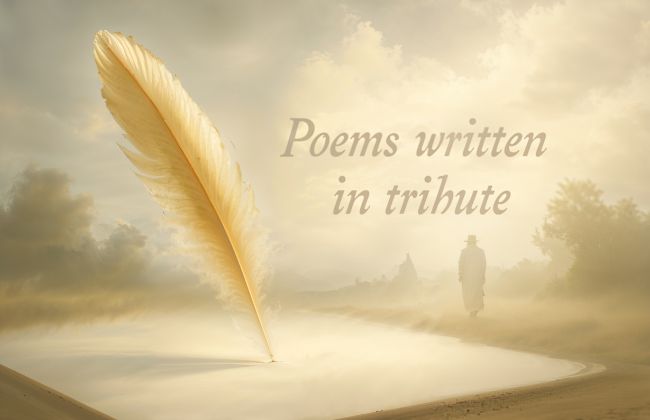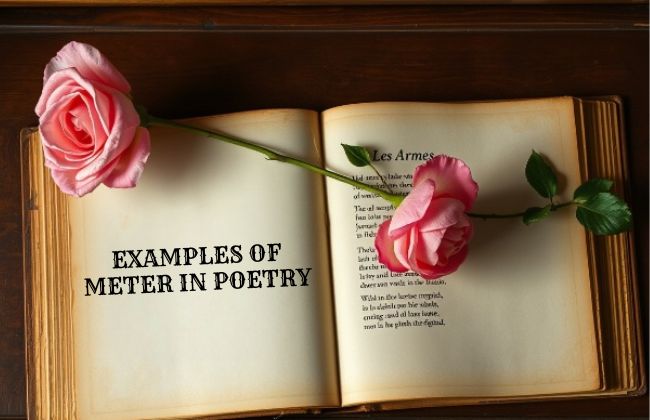Spring is a season that has inspired poets for centuries, awakening creativity with its vibrant colors, gentle breezes, and the promise of renewal.
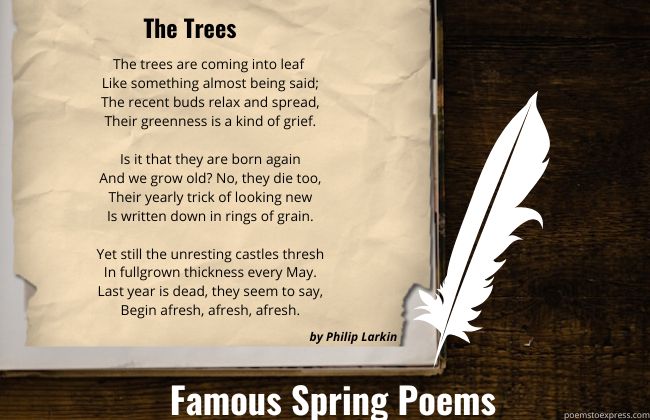
As winter fades, the world transforms—flowers bloom, birds sing, and nature seems to celebrate a fresh start. This magical transition has been beautifully captured in countless famous poems, where writers from different eras and cultures express their awe, hope, and joy at the arrival of spring.
Through evocative language and vivid imagery, these poems invite us to pause and appreciate the delicate beauty and profound symbolism of the season. Whether it’s the gentle warmth of the sun, the fragrance of blossoming trees, or the sense of new beginnings, spring stirs emotions that resonate deeply with readers of all ages.
In this post, we’ll explore some of the most celebrated spring poems, each offering a unique perspective on what makes this season so special.
Table of Contents
- 1 Classic Spring Poems Everyone Should Read
- 1.1 A Light exists in Spring by Emily Dickinson
- 1.2 Sonnet 98 by William Shakespeare
- 1.3 Spring by William Blake
- 1.4 Lines Written in Early Spring by William Wordsworth
- 1.5 Today by Billy Collins
- 1.6 The Spring by Thomas Carew
- 1.7 O were my love yon Lilac fair by Robert Burns
- 1.8 The Trees by Philip Larkin
- 1.9 In Perpetual Spring by Amy Gerstler
- 2 Defining Characteristics of Spring Poems
- 3 Themes in Spring Poetry
Classic Spring Poems Everyone Should Read
A Light exists in Spring by Emily Dickinson
The poem explores the fleeting, ethereal quality of spring’s light, which appears only during this brief season. It symbolizes a transient beauty that eludes scientific explanation, evoking deep emotions in those who experience it. The light’s temporary nature reflects the inevitability of change and loss, creating a sense of longing as it fades away.
Dickinson emphasizes the delicate moments in life that are felt profoundly but cannot be held onto forever. This transient light invites readers to reflect on the fleeting beauty of existence and the inevitability of time’s passage.
It speaks to the human experience of encountering beauty that must eventually be let go.
A Light exists in Spring
Not present on the Year
At any other period -
When March is scarcely here
A Color stands abroad
On Solitary Fields
That Science cannot overtake
But Human Nature feels. See full poem
Sonnet 98 by William Shakespeare
William Shakespeare’s Sonnet 98 delves into themes of love, absence, and longing. The speaker reflects on the beauty of spring, filled with vibrant colors, fragrant flowers, and lively energy.
However, despite the season’s splendor, he finds no joy or inspiration because he is separated from his beloved, the “Fair Youth.” Nature’s wonders—roses, lilies, and birdsong—become mere imitations of his lover’s beauty, leaving him emotionally detached.
The sonnet concludes with a melancholic metaphor, where the speaker compares his experience to playing with the shadow of his absent companion. This poignant work captures the profound emptiness of separation, emphasizing how love can transform even the most beautiful surroundings into a reflection of loss
From you have I been absent in the spring,
When proud-pied April, dressed in all his trim,
Hath put a spirit of youth in everything,
That heavy Saturn laughed and leaped with him.
Yet nor the lays of birds, nor the sweet smell
Of different flowers in odour and in hue,
Could make me any summer’s story tell,
Or from their proud lap pluck them where they grew:
Nor did I wonder at the lily’s white,
Nor praise the deep vermilion in the rose;
They were but sweet, but figures of delight
Drawn after you, – you pattern of all those.
Yet seem’d it winter still, and, you away,
As with your shadow I with these did play.
Spring by William Blake
The poem portrays a harmonious world where nature and humans unite in a cheerful welcome. Birds sing day and night, children play merrily, and a lamb shares a tender moment with a child, symbolizing purity and unity.
Blake’s use of simple, rhythmic language and repetition, particularly the refrain “Merrily, merrily, to welcome in the year,” enhances the poem’s song-like quality, reflecting the carefree spirit of youth. The imagery of the flute, birds, and lambs evokes a pastoral scene of renewal and joy.
Sound the flute!
Now it's mute!
Bird's delight,
Day and night,
Nightingale,
In the dale,
Lark in sky,—
Merrily,
Merrily merrily, to welcome in the year.
Little boy,
Full of joy;
Little girl,
Sweet and small;
Cock does crow,
So do you;
Merry voice,
Infant noise;
Merrily, merrily, to welcome in the year.
Little lamb,
Here I am;
Come and lick
My white neck;
Let me pull
Your soft wool;
Let me kiss
Your soft face;
Merrily, merrily, to welcome in the year.
Lines Written in Early Spring by William Wordsworth
In “Lines Written in Early Spring,” William Wordsworth reflects on the serene beauty of nature, observing birds, flowers, and budding trees. However, this tranquility leads him to a somber realization: the contrast between nature’s harmony and humanity’s discord.
He laments, “What man has made of man,” expressing sorrow over human actions that disrupt natural harmony.
The poem critiques industrialization and societal conflicts, highlighting a loss of innocence and connection with nature. Wordsworth suggests that nature’s purity serves as a mirror, revealing humanity’s moral shortcomings.
I heard a thousand blended notes,
While in a grove I sate reclined,
In that sweet mood when pleasant thoughts
Bring sad thoughts to the mind.
To her fair works did Nature link
The human soul that through me ran;
And much it grieved my heart to think
What man has made of man.
Through primrose tufts, in that green bower,
The periwinkle trailed its wreaths;
And ’tis my faith that every flower
Enjoys the air it breathes. See full poem
Today by Billy Collins
The poem captures the speaker’s euphoria as they describe the warmth, blooming gardens, and vibrant energy of the season.
Collins uses vivid imagery, such as throwing open windows and freeing a canary, to symbolize liberation and the desire to embrace life fully. The speaker’s imagination extends to breaking a snow globe, releasing its inhabitants to experience the beauty of spring.
Through its playful tone and simple language, the poem invites readers to savor the fleeting perfection of such days and reconnect with nature’s vitality
If ever there were a spring day so perfect,
so uplifted by a warm intermittent breeze
that it made you want to throw
open all the windows in the house
and unlatch the door to the canary's cage,
indeed, rip the little door from its jamb,
a day when the cool brick paths
and the garden bursting with peonies
seemed so etched in sunlight
that you felt like taking
a hammer to the glass paperweight
on the living room end table,
releasing the inhabitants
from their snow-covered cottage
so they could walk out,
holding hands and squinting
into this larger dome of blue and white,
well, today is just that kind of day.
The Spring by Thomas Carew
The poem celebrates spring’s arrival, describing how the earth awakens from winter’s grip—snow melts, birds sing, and life flourishes.
However, the speaker laments that while nature transforms, his beloved remains emotionally cold, her heart metaphorically stuck in “January.” This juxtaposition highlights the speaker’s frustration and hopelessness as he observes the warmth and joy of spring, which only amplifies his sorrow.
Carew’s use of vivid imagery and pastoral elements emphasizes the contrast between the natural world’s harmony and the speaker’s personal despair, creating a poignant reflection on love and the passage of time.
Now that the winter's gone, the earth hath lost
Her snow-white robes, and now no more the frost
Candies the grass, or casts an icy cream
Upon the silver lake or crystal stream;
But the warm sun thaws the benumbed earth,
And makes it tender; gives a sacred birth
To the dead swallow; wakes in hollow tree
The drowsy cuckoo, and the humble-bee.
Now do a choir of chirping minstrels bring
In triumph to the world the youthful Spring.
The valleys, hills, and woods in rich array
Welcome the coming of the long'd-for May.
Now all things smile, only my love doth lour;
Nor hath the scalding noonday sun the power
To melt that marble ice, which still doth hold
Her heart congeal'd, and makes her pity cold.
The ox, which lately did for shelter fly
Into the stall, doth now securely lie
In open fields; and love no more is made
By the fireside, but in the cooler shade
Amyntas now doth with his Chloris sleep
Under a sycamore, and all things keep
Time with the season; only she doth carry
June in her eyes, in her heart January.
O were my love yon Lilac fair by Robert Burns
Robert Burns’ O Were My Love Yon Lilac Fair is a romantic lyric that metaphorically compares love to the beauty of nature. The speaker imagines his beloved as a lilac or a red rose, expressing his desire to be a bird or a drop of dew to remain close to her.
The poem celebrates love’s intimacy and sensuality, with vivid imagery of sheltering in the lilac’s blossoms or resting on the rose’s soft folds. Burns also reflects on the transience of beauty, as seasons like autumn and winter disrupt the harmony of spring.
Ultimately, the poem captures the speaker’s longing for eternal closeness and the bittersweet nature of love.
O were my love yon Lilac fair,
Wi' purple blossoms to the Spring,
And I, a bird to shelter there,
When wearied on my little wing!
How I wad mourn when it was torn
By Autumn wild, and Winter rude!
But I wad sing on wanton wing,
When youthfu' May its bloom renew'd.
O gin my love were yon red rose,
That grows upon the castle wa';
And I myself a drap o' dew,
Into her bonie breast to fa'!
O there, beyond expression blest,
I'd feast on beauty a' the night;
Seal'd on her silk-saft faulds to rest,
Till fley'd awa by Phoebus' light!
The Trees by Philip Larkin
In Philip Larkin’s poem The Trees, the speaker reflects on the cyclical nature of life and death through the imagery of trees budding in spring.
The initial observation of trees coming into leaf is likened to “something almost being said,” suggesting a quiet, unspoken renewal. However, this greenness is described as “a kind of grief,” indicating that new life is intertwined with the inevitability of death.
The speaker contemplates whether trees are “born again” while humans age, only to realize that trees too “die” and their age is recorded in “rings of grain.”
Despite this, the trees continue to grow, their “unresting castles” thickening each May, symbolizing resilience and the perpetual cycle of life.
The trees are coming into leaf
Like something almost being said;
The recent buds relax and spread,
Their greenness is a kind of grief.
Is it that they are born again
And we grow old? No, they die too,
Their yearly trick of looking new
Is written down in rings of grain.
Yet still the unresting castles thresh
In fullgrown thickness every May.
Last year is dead, they seem to say,
Begin afresh, afresh, afresh.
In Perpetual Spring by Amy Gerstler
The poem vividly portrays a garden as a place of solace and transformation, where even the “prick of the thistle” revives faith in perpetual spring—a metaphor for resilience and recovery.
Gerstler emphasizes humanity’s deep-seated desire for harmony with all species, imagining unlikely unions like “the lion and the lamb cuddling.” The poem suggests that for every wound, nature offers a remedy, symbolizing hope and renewal.
Through its rich imagery and meditative tone, the poem invites readers to embrace the restorative cycles of life and the optimism inherent in spring.
Gardens are also good places
to sulk. You pass beds of
spiky voodoo lilies
and trip over the roots
of a sweet gum tree,
in search of medieval
plants whose leaves,
when they drop off
turn into birds
if they fall on land,
and colored carp if they
plop into water.
Suddenly the archetypal
human desire for peace
with every other species
wells up in you. The lion
and the lamb cuddling up.
The snake and the snail, kissing.
Even the prick of the thistle,
queen of the weeds, revives
your secret belief
in perpetual spring,
your faith that for every hurt
there is a leaf to cure it.
Defining Characteristics of Spring Poems
Spring poems are easily recognized by several defining characteristics that set them apart from poems about other seasons:
1. Vivid Natural Imagery
- Flora and Fauna: Descriptions of blooming flowers, budding trees, singing birds, and the reappearance of animals after winter hibernation.
- Colors and Light: Emphasis on bright greens, yellows, and the return of sunlight.
- Movement and Growth: Imagery of sprouting, blossoming, and flowing water.
2. Sensory Language
- Sounds: Birds chirping, gentle breezes, rainfall.
- Smells: Fresh earth, blossoming flowers, rain-washed air.
- Textures: Soft petals, new grass, warm sunlight on skin.
3. Emotional Tone
- Joy and Optimism: A sense of happiness, hope, and anticipation for new beginnings.
- Wonder and Awe: Admiration for nature’s beauty and the miracle of renewal.
- Reflection: Contemplative moments inspired by nature’s rebirth.
4. Symbolism and Metaphor
- Rebirth and Renewal: Spring as a metaphor for personal or spiritual awakening.
- Youth and Innocence: Often linked to childhood, purity, or new love.
- Cycle of Life: The progression from winter’s dormancy to spring’s vitality symbolizes life’s ongoing cycles.
Themes in Spring Poetry
Spring poetry explores a range of themes that resonate with the season’s transformative energy. Below are the most prominent themes, illustrated with examples:
1. Renewal and Rebirth
Core Idea: Spring symbolizes new beginnings, both in nature and in human life.
Poetic Examples:
- Christina Rossetti’s Spring describes the season as a time when “life rears its head” with “buds and bells and stars.”
- A.E. Housman’s Loveliest of Trees, the Cherry Now reflects on life’s brevity, urging readers to seize the moment amid spring’s beauty.
Why It Matters: This theme connects to universal human experiences of starting anew, whether after loss, hardship, or stagnation.
2. Love and Romance
Core Idea: Spring’s vitality often parallels the blossoming of romantic feelings or passion.
Poetic Examples:
- Shakespeare’s Sonnet 18 (“Shall I compare thee to a summer’s day?”) draws on spring’s warmth to celebrate beauty and love.
- Pablo Neruda’s Twenty Love Poems and a Song of Despair uses spring imagery to evoke sensuality and desire.
Why It Matters: The season’s fertility and vibrancy make it a natural metaphor for love’s growth and intensity.
3. Transience and Impermanence
Core Idea: Spring’s fleeting beauty reminds poets of life’s ephemerality.
Poetic Examples:
- Robert Frost’s Nothing Gold Can Stay notes that “Nature’s first green is gold” but quickly fades, symbolizing life’s transient joys.
- Japanese haiku, like those by Basho, often capture spring’s brief cherry blossoms to reflect on impermanence.
Why It Matters: This theme encourages mindfulness and appreciation of the present moment.
4. Hope and Optimism
Core Idea: Spring’s arrival after winter inspires feelings of hope and possibility.
Poetic Examples:
- Emily Dickinson’s A Light Exists in Spring describes a unique light that “almost speaks to you,” evoking spiritual renewal.
- Langston Hughes’ April Rain Song celebrates rain as a life-giving force, symbolizing hope.
Why It Matters: This theme uplifts readers, offering solace in times of despair.
5. Nature’s Power and Cycle
Core Idea: Spring showcases nature’s resilience and cyclical renewal.
Poetic Examples:
- Gerard Manley Hopkins’ Spring praises the season’s “juice and joy” as a reflection of divine creation.
- Walt Whitman’s Song of Myself connects spring’s growth to the interconnectedness of all life.
Why It Matters: This theme highlights humanity’s place within the natural world, fostering environmental awareness.
You might also like:

